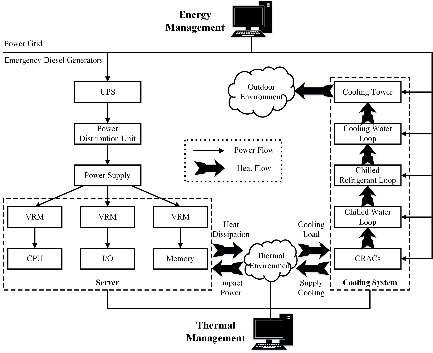[Clean Energy]
Jin C Q, Bai X L, Yang C, et al. A review of power consumption models of servers in data centers [J]. Applied Energy, 2020, 265:114806.
Keywords: Server; Power consumption model; Data center; Energy performance
High Lights:
Analyze the server power trends from generation to generation.
Classify and compares existing power consumption models of servers.
Summarize the application scenarios of the power consumption models.
Discuss the model parameters for model construction.
Identify the future research directions for improving data centers’ energy efficiency.
Abstract:
This study provides an overview of power consumption models of servers in data centers. The server is the basic unit of both power and heat flow paths; therefore, its power consumption model can be used for both energy management and thermal management. Investigations of server power trends were carried out according to the data from the Standard Performance Evaluation Corporation (SPEC). It is found that a heavier workload can be handled without consuming more energy, and the difference between the peak power and idle power of the servers is not consistent from generation to generation. Furthermore, the existing power consumption models are categorized as additive models, baseline power + active power (BA) models, and other models based on calculation formula and other factors. Specifically, there are four forms of BA models: linear regression models, power function models, non-linear models and polynomial models. Besides, these models have been compared in terms of accuracy. It can be found that the polynomial model and the linear regression model perform better in terms of accuracy. Additionally, the model applications are summarized. Considering server architecture upgrades and technological innovation, the establishment of the new model and its application scenarios are discussed. Moreover, in-depth and accurate power consumption models must be extensively researched and applied to effectively improve data centers, including information technology (IT) equipment and cooling equipment, in terms of overall energy performance.
Resource:https://www.sciencedirect.com/science/article/abs/pii/S0306261920303184
